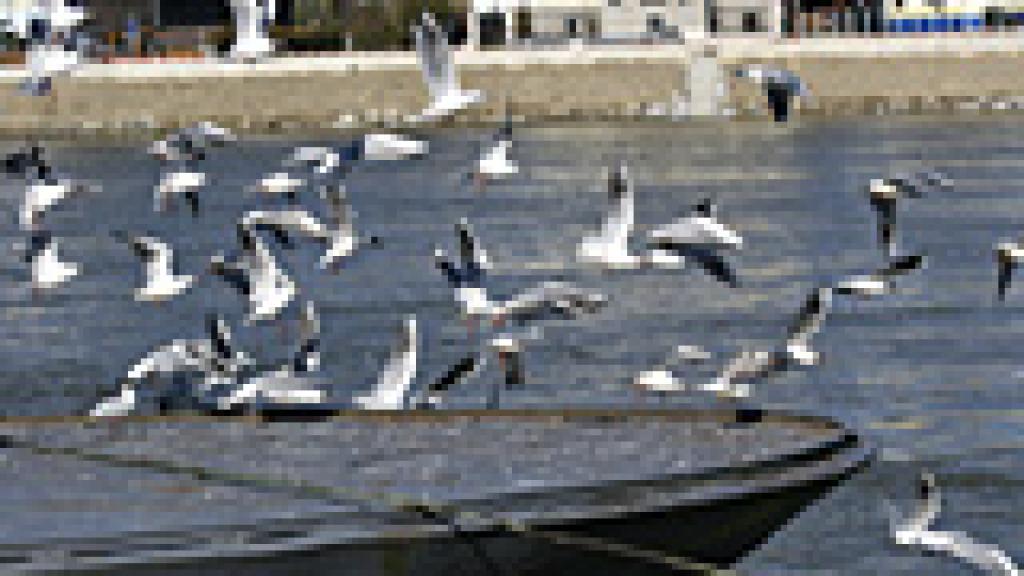Danube Water Transport Can Be Green
Vienna, 11 March 2008 - The first-ever `Joint Statement on Guiding Principles for the Development of Inland Navigation and Environmental Protection in the Danube River Basin´ was launched today. The interdisciplinary process to create the Joint Statement was led by the ICPDR, the Danube Commission on Navigation and the International Commission for the Sava River Basin.

Vienna, 11 March 2008 - The first-ever `Joint Statement on Guiding Principles for the Development of Inland Navigation and Environmental Protection in the Danube River Basin´ was launched today.
The interdisciplinary process to create the Joint Statement was led by the Vienna-based International Commission for the Protection of the Danube River (ICPDR), the Budapest-based Danube Commission on Navigation and the Zagreb-based International Commission for the Sava River Basin (a Danube sub-basin). Over 50 stakeholders including 12 basin governments and 22 industry and environmental interest groups also participated in the year-long process.
Participants generated a common understanding about the protection of the riverine environment and the necessary conditions for developing sustainable inland navigation in an intact riverine landscape. This includes how to maintain the existing infrastructure such as the navigation channel, sluices and ports and how to improve navigation without causing conflicts.
“One major result is that all participants – from developers to conservationists -- agreed that inland navigation, if done properly, can be a sustainable mode of transport,” said Milovan Bozinovic, President of the Danube Commission. “Another is that the Statement provides a set of principles, again agreed by all, that guide how the development of navigation projects can and should be done properly,” added Dejan Komatina, Secretary of the Sava Commission.
One key principle is the need for an interdisciplinary planning process from the beginning of a project that includes: environment, water management and transport ministries; scientists in river engineering, navigation, ecology, spatial planning, tourism and economics; and other stakeholders such as environmental NGOs and the private sector. Other principles include minimizing the impacts of engineering interventions, using non-structural measures (e.g. improved fleets, technologies and information systems) and applying environmental impact assessments with public input.
The initiation of the Joint Statement was driven by concerns that some planned Danube navigation projects could conflict with the EU Water Framework Directive -- water protection legislation that obliges EU Member States to reach a `good´ status for all European waters by 2015 – and the desire to improve the navigation conditions on the Danube. In 2004, the ICPDR’s `Danube River Basin Analysis´ had identified past alterations caused by navigation as one of the factors behind overall ecological status degradation in the basin.
There was further concern about EU plans to make the Danube a major transport corridor under EU Trans-European Transport (TEN-T) guidelines. The plans were intended to provide a sustainable solution to commercial transport, especially road transit, along the Danube corridor which had increased by over 100 per cent in nearly all Danube countries in the last decade. The plans, however, also drove a wave of proposals for investments in new waterway infrastructure in the Danube Basin, and increasing concern over their potential impact on the river ecology.
In response, the Joint Statement further recognizes the need to abide by the Water Framework Directive, in particular the `river basin management plans´ for the Danube and Sava basins to be prepared by 2009. These plans will include measures to protect and restore aquatic ecological systems and to reduce the negative past and potential impacts from navigation development.
“Once a decision-maker or a water manager in the Danube Basin reads this guide before starting a new navigation project, then he or she will realize that having a multi-use river system that benefits ships, people and ecology is both possible and obligatory,” said ICPDR Executive Secretary Philip Weller “And while this Joint Statement was created for Danube users, we believe that its comprehensiveness, scope and principles are applicable and valuable anywhere in the world.”





